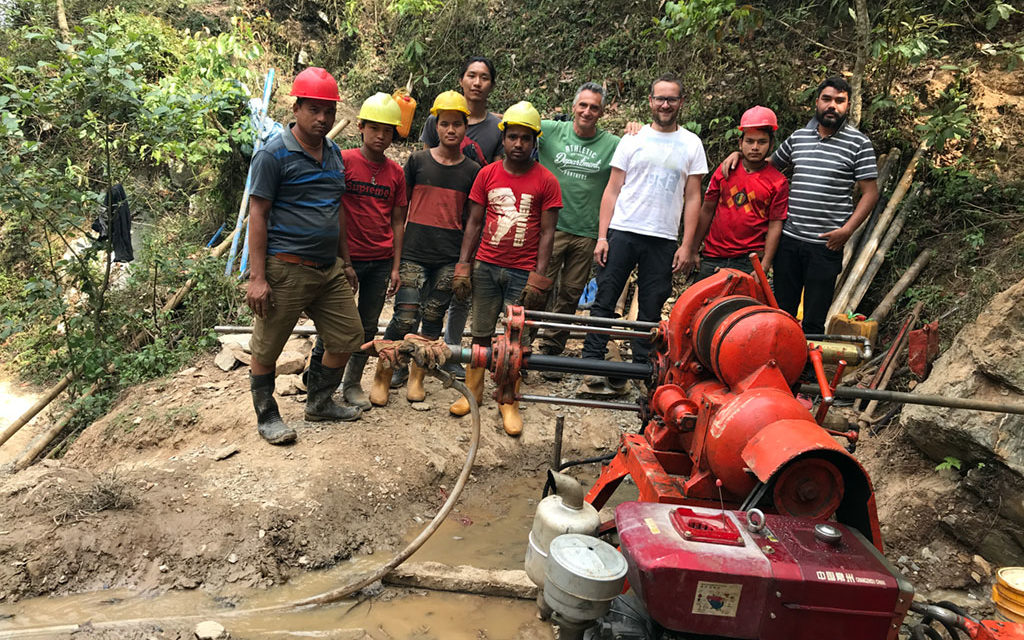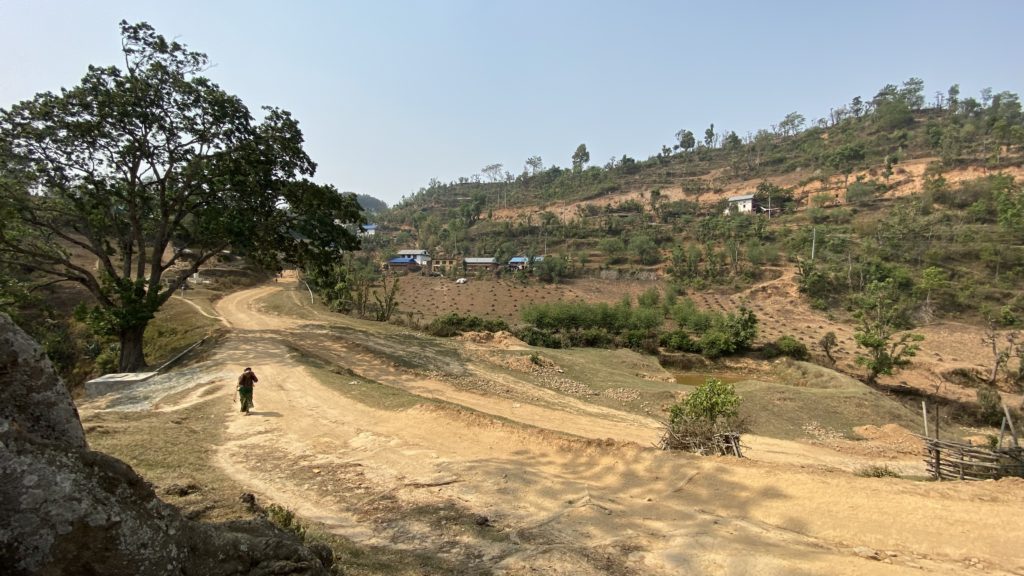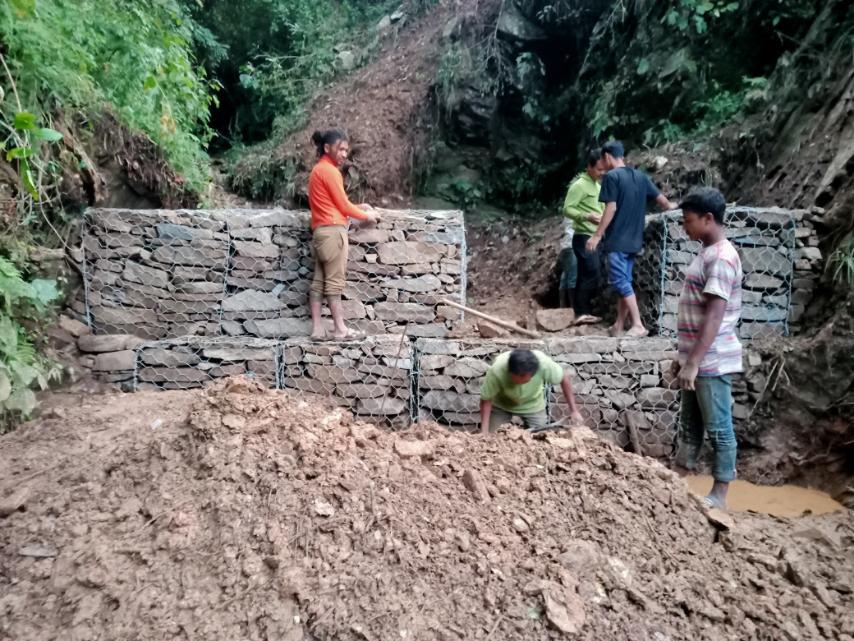Chapakhori Village Water Project
Nepal: drinking water for around 150 families! (2019-2022)
Chapakhori village is located on a hilltop in the pre-Himalayan Bagmati region, southeast of Kathmandu: the population were living without the immediate availability of water resources for human consumption, hygiene or for the needs of their animal. The water supply in the area was further depleted by the 2015 earthquake.
About 150 families live in the village. Every day, sometimes more than once, people have to walk a long path — downhill and then uphill with heavy water canisters on their shoulders — to reach a modest spring at the base of the hill.
click on the image to see the gallery

First phase of the project:
After on-site surveys, carried out in 2018, by engineer Matteo Greggio, geologist Claudio Galli and a drilling company from Kathmandu, the first phase of the water project started at the end of April 2019.
This was made possible thanks to the essential support of the 8×1000 programme of UBI (the Italian Buddhist Union), which co-funded the project, and other donors.
After manually transporting machinery and equipment to the site (not accessible by road), the technicians started drilling. Under the supervision of our representatives, five sub-horizontal holes were drilled at the base of the hill and perforated pipes were installed to collect and channel the water.
A total of 89 metres were drilled and water was found from the fourth borehole. To avoid the risk of wasting even a single drop, two 500 litre tanks were installed.
Water taken from the borehole was analysed by a Kathmandu laboratory with the result: ‘All observed values met the NDWQS for drinking water’. (The NDWQS is the National Drinking Water Quality Standard).
In January-February 2020, after the final design was drawn up, water pumps, a switchboard, couplings, valves and various seals were purchased in Italy.
The materials were sent by air to Nepal and arrived in early March 2020, just days before Nepal closed its borders due to the Covid emergency.
Second phase of the project:


click on the images to see the galleries
The second phase of the project — a pumping system to take the water up to the main points of the village at the top of the hill — was planned for 2020, but our experts were unable to travel from Italy. The Nepalese government’s ban on entry and movement in the area, during the Covid emergency, forced the postponement of the project until 2022.
In April 2022, engineer Greggio and geologist Dr. Galli were finally able to travel to the site to verify the situation and resume contact with local companies for the continuation of the work. The situation at Chapakhori was optimal, with a good flow of water even from a third hole among those drilled at the base of the hill.
Through contacts in the Geology Department of Kathmandu University, another company had to be found, as unfortunately the previous one — due to the difficulties of the Covid period — was no longer able to provide its services.
There was also a further difficulty due to rising prices in Nepal, especially for iron and steel materials, as a result of the general increase worldwide. All quotations were updated with the new company and work in Chapakhori finally started again in June 2022.
Materials (pipes, poles, gabions, tanks, fences, cement, stones, etc.) were purchased in Kathmandu. After setting-up the construction site in Chapakhori, work was carried out for the bases of the tanks and the site for housing the water pumps. This work was carried out also with the collaboration of workers from the village.
As of September 2022, gabion slope protection work was completed and the final route of the pipes, from the base of the hill up to the village, was identified.
As stipulated in the project, the people of the village formed a Standing Committee to manage the works and to connect and maintain the power line required for the pumping system.
January 2023:
With a new mission to Nepal by the Italian geologist and engineer, together with an electrician and plumber, the project was completed with the installation of the pumps and the switchboard, that now take the water up to the taps in the village!
Having water close to home is an unimaginable improvement in the quality of life for these people, and in particular for the women, who were resigned to walking up the hill with 20-litre canisters of water on their shoulders….

